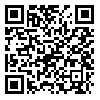BibTeX | RIS | EndNote | Medlars | ProCite | Reference Manager | RefWorks
Send citation to:
URL: http://ijoce.iust.ac.ir/article-1-317-en.html
Growing tendency for Urbanization and rapid development of the cities has resulted in urban neighborhoods obstructing the access of each other to the natural sources e.g. solar energy, natural ventilation. Sunlight as the main part of input energy in urban energy balance equation and natural lighting is of vital importance. This paper attempts to achieve an optimum morphology for residential blocks in urban area with the highest exposure to the sunlight. To reach this goal a pilot area in Tabriz’s downtown was selected and regarding solar angle, local street regulations and the width of surrounding streets 3 different scenarios for the buildings blocks were defined. Using a three-dimensional microclimate model, ENVI-met, solar access of defined scenarios was calculated for the longest and the shortest day of the year. Results showed that Type C2 (highest, more open spaces) is a more efficient style for winter times as it receives more of the sun’s energy and also the amount of sun it gets during a day and type B2 (medium open space and height) is the better for summer as it gets less energy from the sun and it is exposed to sunlight less than other types in a hot summer day.
Received: 2017/04/24 | Accepted: 2017/04/24 | Published: 2017/04/24
| Rights and permissions | |
 | This work is licensed under a Creative Commons Attribution-NonCommercial 4.0 International License. |





